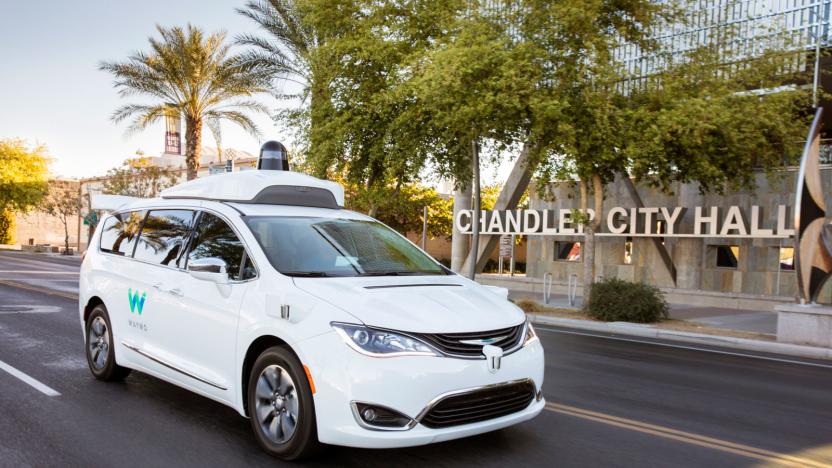driverlessvehicles
Latest

DoorDash will make autonomous food deliveries with help from GM
DoorDash has made it pretty clear that if you're hungry, it's going to be the company that makes sure you get what you want. Over the last year or so it's rolled out group ordering, grocery delivery and even ice cream delivery -- all with sustainability on the agenda. Now, it's making sure you get fed as soon as is absolutely possible, thanks to a partnership with General Motors' Cruise self-driving vehicles.

Waymo tells law enforcement what to do in case of emergency
In a decade or so, law enforcement could already be used to dealing with incidents and accidents involving self-driving vehicles. For now, Waymo wants to make sure cops, firefighters, paramedics and other first responders know how to handle their driverless vehicles, so the company put together a 41-page law enforcement interaction protocol. According to IEEE Spectrum, the Alphabet-owned company has submitted the protocol to the California DMV as part of its application to test fully driverless vehicles -- ones with no human tester behind the wheel -- on its roads. And to summarize the booklet's contents (PDF), Waymo wants authorities to prioritize calling the company, immobilizing the vehicle and protecting its autonomous tech in case of emergencies.

Inhabitat's Week in Green: energy-harvesting toilet, LED lightbulb overhaul and a floating, solar-powered resort home
Each week our friends at Inhabitat recap the week's most interesting green developments and clean tech news for us -- it's the Week in Green. LED technology shone brighter than the summer sun this week as artist Bruce Munro unveiled plans for his largest lighting installation ever -- a field of thousands of LED flowers that will spring up next year at Australia's Ayers Rock. Best of all, the entire installation will be powered by solar energy! We also saw Rice University flip the switch on its new Epiphany Skyspace -- a green-roofed pavilion that's topped with a brilliant blue canopy of light. If you're still not convinced that LEDs are the future, we recently produced two videos that are sure to show you the light -- check out our interview with five professional lighting designers on today's state of the art LED bulbs and watch as we give Inhabitots editor Julie Seguss a light bulb overhaul that shaves over $400 off her utility bills. And if you're ready to make the switch, check out our guide to 24 gorgeous green lamps that look great with LED bulbs. This week saw some exciting new developments in the realm of renewable energy. First, a group of scientists in the UK developed a new energy-harvesting device that attaches to the joint between the thigh and shin. The device could be used to power monitors and mobile devices, to name a few possible applications. Meanwhile, scientists from Nanyang Technological University in Singapore have invented a new toilet that turns human waste into electricity while reducing the amount of water needed for flushing by up to 90 percent. That's what we call, win-win!

GM plans to have driverless cars on the road by 2018
There's certainly no shortage of folks working to developed driverless vehicles, but GM now looks set to make itself one of the biggest players and, judging from its targets, one of the most ambitious. As the AP reports. GM bigwig Rick Wagoner will devote at least part of his speech at CES on Tuesday to the technology, with testing of the vehicles reportedly planned as soon as 2015 and the first cars on the road expected "around 2018." As you might expect, those goals have left some slightly skeptical, with DARPA Urban Challenge competitor Sebastian Thrun telling the AP that while it's "technically attainable," he's hardly confident that he'll see driverless cars on the roads within a decade, saying that there are "some very fundamental, basic regulations in the way of that vision in many countries." For it's part, GM sees the technology initially being used for highway driving only, with you still responsible for controlling the vehicle around local streets -- except for parking, of course.


